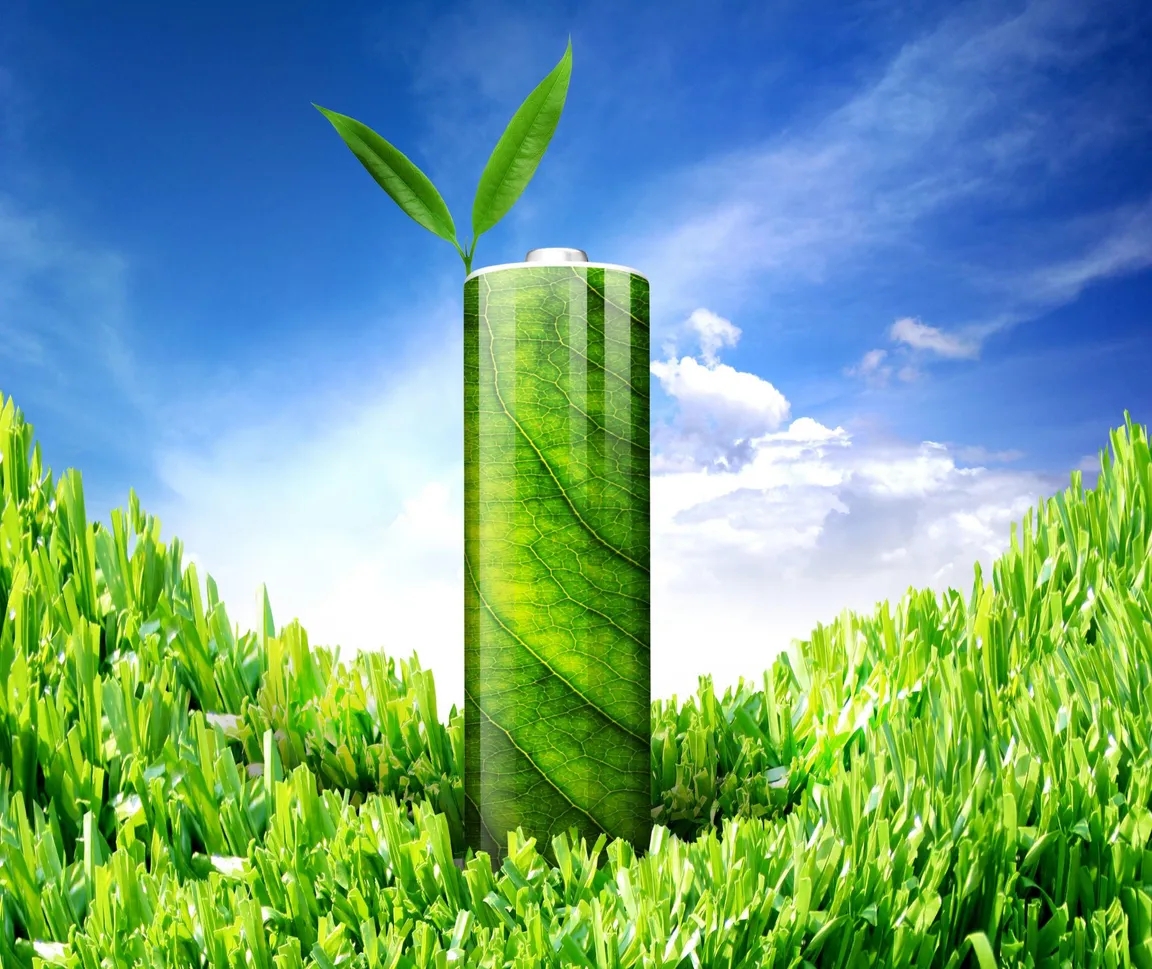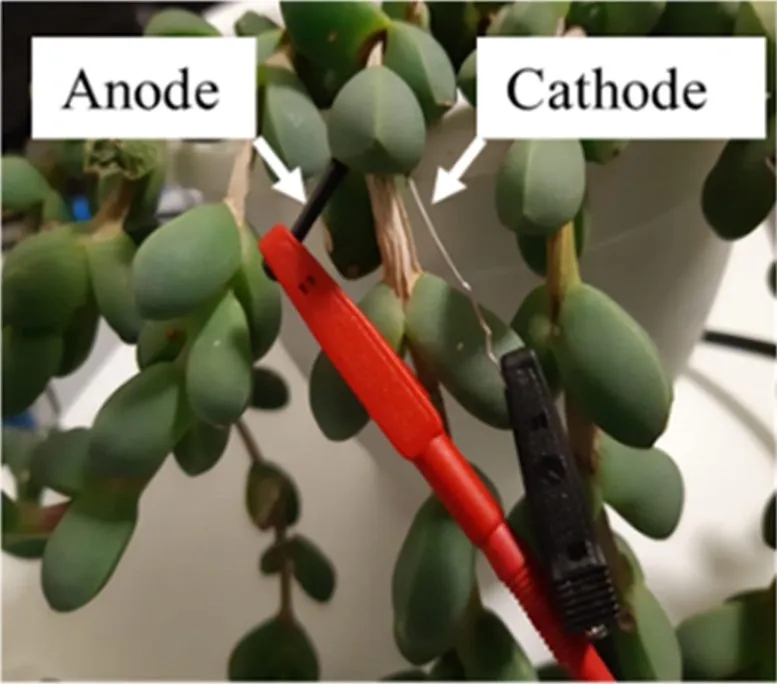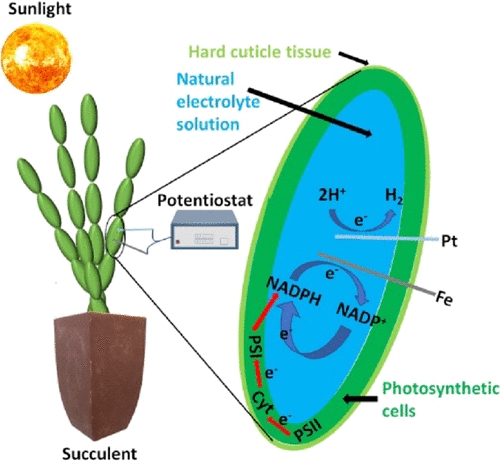博文
研究人员开发出一种依靠光合作用运行的活“生物太阳能电池”
||
研究人员开发出一种依靠光合作用运行的活“生物太阳能电池”
诸平
据美国化学学会(American Chemical Society简称ACS)2023年1月16日报道,科学家们已经开发出一种依靠光合作用运行的活“生物太阳能电池”(Scientists Have Developed a Living “Bio-Solar Cell” That Runs on Photosynthesis)。研究者相信,他们的技术可以为未来创造可持续的多用途绿色能源技术铺平道路。
植物通常被认为是食物、氧气和装饰品的来源,而不是电力的来源。然而,科学家们发现,通过利用植物细胞内电子的自然传输,可以作为绿色生物太阳能电池的一部分发电。2022年11月23日发表在《美国化学会应用材料与界面》(ACS Applied Materials & Interfaces)杂志网站的一项研究中,以色列理工学院(Israel Institute of Technology简称Technion, Haifa, Israel) 的研究人员,首次使用多肉植物制造了一个依靠光合作用运行的活“生物太阳能电池” 。详见Yaniv Shlosberg, Gadi Schuster, Noam Adir. Self-Enclosed Bio-Photoelectrochemical Cell in Succulent Plants. ACS Applied Materials & Interfaces, 2022, 14(48): 53761–53766. DOI: 10.1021/acsami.2c15123. Publication Date: November 23, 2022. https://doi.org/10.1021/acsami.2c15123
电子作为生物过程的一部分在所有活细胞中自然传输,从细菌和真菌到植物和动物无一例外。通过引入电极,电池可用于产生可在外部使用的电能。之前的研究已经使用细菌制造了燃料电池,但它需要持续喂养。这种新方法则是使用光合作用(植物将光能转化为化学能的过程)来产生电流。
在此过程中,光驱动电子从水中流出,最终导致氧气和糖的产生。这意味着活的光合细胞不断产生电子流,这些电子流可以作为“光电流(photocurrent)”被拉走并用于为外部电路供电,就像太阳能电池一样。图2(Fig. 2)展示了的冰植物多肉(ice plant succulent)可以变成活的太阳能电池,并通过光合作用为电路供电。
某些植物——比如在干旱环境中发现的多肉植物(succulents)——有厚厚的角质层来保持叶子中的水分和养分。雅尼夫·施洛斯伯格(Yaniv Shlosberg)、加迪·舒斯特(Gadi Schuster) 和诺姆·艾德(Noam Adir)想要首次测试多肉植物的光合作用是否可以利用其内部水和营养物质作为电化学电池的电解质溶液为活太阳能电池发电。
研究人员使用多肉植物Corpuscularia lehmannii(也称为“冰植物”)制造了一种活的太阳能电池。他们将铁阳极和铂阴极插入植物的一片叶子中,发现其电压为 0.28 V。当连接到电路中时,它会产生高达20 μA/cm2的光电流密度,当暴露在光线下时,它可以持续产生电流超过一天。尽管这些数字小于传统碱性电池的数字,但它们仅代表一片叶子。
之前对类似有机设备的研究表明,串联多个叶子可以增加电压。该团队专门设计了活太阳能电池,使内部叶片溶液中的质子可以在阴极结合形成氢气,并且可以收集这些氢气并将其用于其他应用。研究人员表示,他们的方法可以促进未来可持续的多功能绿色能源技术的发展。
本研究得到了来自大科技学院能源项目的Nevet资助{“Nevet” grant from the Grand Technion Energy Program (GTEP) }、以色列理工学院VPR贝尔曼能源研究基金(Technion VPR Berman Grant for Energy Research)以及以色列理工学院氢技术研究实验室{ Technion’s Hydrogen Technologies Research Laboratory (HTRL)}的支持。
上述介绍,仅供参考。欲了解更多信息,敬请注意浏览原文或者相关报道。
Harvesting an electrical current from biological photosynthetic systems (live cells or isolated complexes) is typically achieved by immersion of the system into an electrolyte solution. In this study, we show that the aqueous solution found in the tissues of succulent plants can be used directly as a natural bio-photo electrochemical cell. Here, the thick water-preserving outer cuticle of the succulent Corpuscularia lehmannii serves as the electrochemical container, the inner water content as the electrolyte into which an iron anode and platinum cathode are introduced. We produce up to 20 μA/cm2 bias-free photocurrent. When 0.5 V bias is added to the iron anode, the current density increases ~10-fold, and evolved hydrogen gas can be collected with a Faradaic efficiency of 2.1 and 3.5% in dark or light, respectively. The addition of the photosystem II inhibitor 3-(3,4-dichlorophenyl)-1,1-dimethylurea inhibits the photocurrent, indicating that water oxidation is the primary source of electrons in the light. Two-dimensional fluorescence measurements show that NADH and NADPH serve as the major mediating electron transfer molecules, functionally connecting photosynthesis to metal electrodes. This work presents a method to simultaneously absorb CO2 while producing an electrical current with minimal engineering requirements.
https://blog.sciencenet.cn/blog-212210-1372509.html
上一篇:看视频和玩电子游戏会增加儿童患强迫症的风险
下一篇:免疫疗法:对抗耐药肿瘤的新型二合一武器


